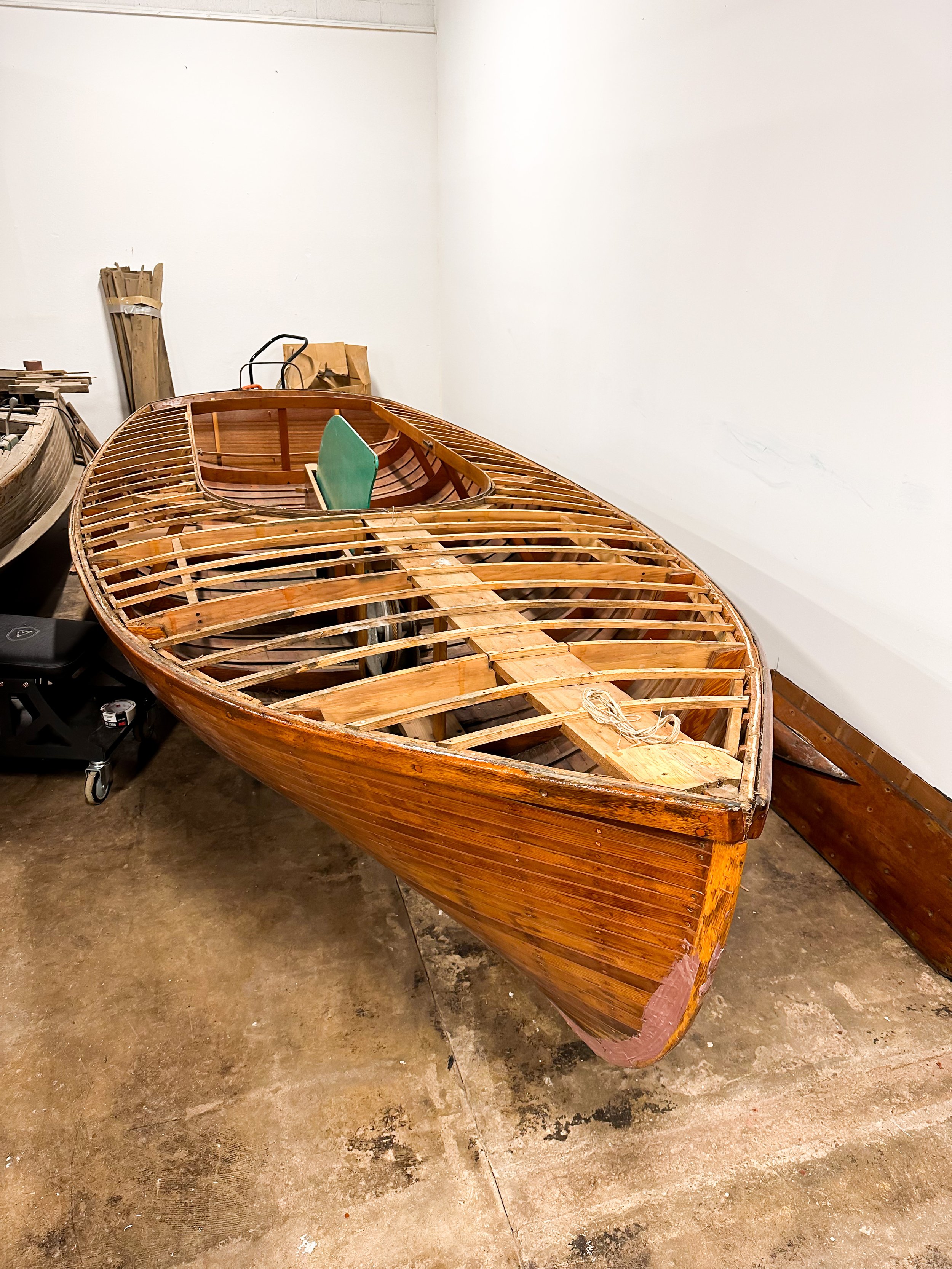Working with Others, Alone
I love thinking about restoration work as quintessentially communal, even if I am (as I so often am) working in my shop alone. I’m working out these ideas in a longer-form article and/or series, but here’s the general gist for the blog. If it does become something larger, I’ll be sure to link to it here.
First, tradition—as in, traditional boatbuilding--is not stagnant. It is not “how things used to be done back then.” It is alive. For me to work on a boat that was built in a traditional way, though I may not replicate those materials and techniques, it requires me to engage with the tradition before me, dynamic, alive, and breathing. Restoring boats, either back to a completely original state or a unique resto-mod, becomes part of the life of that boat.
Stories are integral to this work; some might call it a boat’s provenance, but it’s just a boat’s history. For instance, this K-Boat, hull number 289, was built by Murray Wright in the Finger Lakes region of New York, somewhere around 1958 or 1959. It was passed down in the same family and moved from Bath, NY, to Denver, CO, sometime in the 1970s. At some point, around 2015, the hole in the deck where the mast passes through was widened, done by someone with considerably less skill than Mr. Wright. Someone else applied many patches and fills throughout the hull, the kind done by an amateur who knew a good bit about what they were doing (the kind that works great and looks pretty rough). All of these people are with me in the shop as I replace the deck and build a new mast. I take note of Murray Wright’s own pencil marks on the frames underneath as I pull the old, warped planks off.
It’s easy to romanticize, but this work isn’t romantic. I don’t wander around the shop in a fog of mystical communion, softly touching each and every board and whispering to them about their destinies. No: I’m probably over-caffeinated with Kenny Rogers playing too loud for my neighbors’ liking. But I do love these boats, and I do care greatly for them and the families and waters to whom they belong.
It’s quite humbling to be a part of these traditions and stories.

